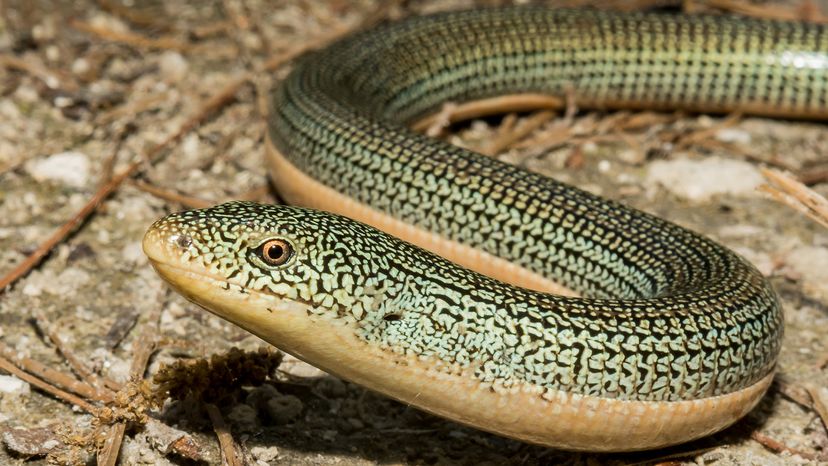There are two common species of glass lizards you may encounter in North America.
Eastern Glass Lizard
The eastern glass lizard (Ophisaurus ventralis) is one of the most abundant species of glass lizards, commonly found in the southeastern United States. This variety can be identified by a long, lateral groove that runs from its head to tail.
These lizards can reach lengths up to 3 feet (0.9 meters), and about two-thirds of that length is made up of their long, fragile tail.
In their habitat, eastern glass lizards can most often be found in sandy soils and grassy areas across the coastal plain, where they prey on insects, young rodents, frogs and other lizards.
Slender Glass Lizard
Next up are slender glass lizards (Ophisaurus attenuatus). This species is a real standout when it comes to legless reptiles and gets its name from its particularly long and thin body, making it one of the most snake-like glass lizards around.
This lizard is distributed all over southeastern and central North America, with territories that stretch from the coastal plain into east Texas to as far north as Illinois. It’s often found burrowing in open fields, pine flatwoods and grasslands, where it hunts small snakes, insects and other invertebrates like snails.
While it shares many characteristics with other glass lizards — such as its breakable tail and external ear openings — the slender glass lizard also has dark stripes running along its body.
All 7 Glass Lizard Species
These are all the glass lizards you can find in different places worldwide.
- Asian glass lizard (Ophisaurus gracilis)
- Eastern glass lizard (Ophisaurus ventralis)
- European glass lizard (Pseudopus apodus), sometimes placed in the genus Ophisaurus
- Indian glass snake (Ophisaurus apodus), closely related to Pseudopus apodus
- Island glass lizard (Ophisaurus compressus)
- Mojave fringe-toed lizard (Ophisaurus mojavensis)
- Slender glass lizard (Ophisaurus attenuatus)
2 Slender Glass Lizard Subspecies
- Eastern slender glass lizard (Ophisaurus attenuatus longicaudus), sometimes called a Florida worm lizard
- Western slender glass lizard (Ophisaurus attenuatus attenuatus)
